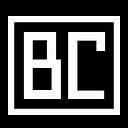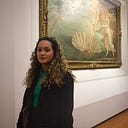my Conscious, uniting patients and psychologists.
How I use UX Design to unite psychologists and patients in a simple and safe way and thus improve the mental health of Brazilians.
The challenge
In December 2020, I joined the time of UX Designers and accepted the challenge of helping to improve the mental health of Brazilians through the use of telemedicine.
How to take advantage of telemedicine opportunities to improve the health of Brazilians who need mental help?
Overview
Role: Product Designer
Team: 2 Product Designers and 1 UX Writer
Timeline: 6 Months
Tools: Figma, Miro, Zoom, Google Forms, and Maze.
Design Process
Design Thinking
- Discover: research your users’ needs.
- Define: state your users’ needs and problems.
- Ideate: challenge assumptions and create ideas.
- Design: start to create solutions.
- Test: try your solutions out.
Discover
Problem Statement
Brazilians are recognized worldwide for their joy. However, data from WHO (World Health Organization) show that 5.8% of Brazilians (about 12 million people) suffer from depression. It is estimated that between 20% and 25% of the population had, have, or will have depression, which is the most prevalent psychiatric illness in Brazil.
Other WHO data show that we are the most anxious country on the entire planet. According to a survey by Vittude, 86% of Brazilians deal with some mental health problem. In addition, studies show that the number of cases of depression and anxiety has grown in Brazil since the beginning of social isolation, due to the pandemic of COVID-19.
Also as a consequence of COVID-19, face-to-face psychological care has undergone changes and the search for distance care has grown. However, according to a report by the magazine A Gazeta, non-face-to-face care does not only challenge patients but also requires adaptations from psychologists and psychiatrists. Professionals and patients noticed a certain difficulty in maintaining privacy in online consultations and with that, there is a certain insecurity to non-face-to-face services.
Thus, the current scenario shows a need to seek solutions, without geographical barriers, that facilitate the search for professionals and psychological care, so that both patients and professionals can communicate more safely and easily.
Possible Solution
The goal is to create an online psychological service platform so that patients can search for the professionals of their choice and perform their care in a safe way, while health professionals can offer and manage their care with more practicality and security.
Competitive Analysis
A competitive analysis is a strategy where you identify major competitors and research their products, sales, and marketing strategies. By doing this, you can create solid business strategies that improve upon your competitors.
I did research looking for similar products and compared 5 websites/apps of which 3 are strong.
Certainties, Assumptions, and Doubts
After understanding the problem statement through desk research and competitive analysis, some Certainties, Assumptions, and Doubts emerged.
I separated and analysed all these issues and we used a matrix to prioritise each one of them. From the Knowledge X Impact Matrix, we understand which information would be most relevant.
Miro: https://miro.com/app/board/o9J_layL8nU=/
You can read more about the Impact x Knowledge Matrix here.
Researches
Based on the assumptions prioritized from the CSD Matrix, we set up a survey form using Google Forms.
We obtained a total of 103 answers, 40 patients, 28 non-patients, and 35 psychologists. We understand that in order to validate with more credibility, a greater number of responses would be necessary, mainly on the part of psychologists, however, due to the tight schedule and limited resources, we chose to continue the project with this amount of responses.
Summary of Quantitative Research:
- Most of my audience was female
- 19–25 years
- WhatsApp, Zoom, Skype are the tools most used by psychologists
- I assumed that both the patients and the psychologists are more available for online appointments. Our surveys surveyed that 86% of psychologists see online, but only 41.7% of patients make an appointment online.
- I assumed that patients have a hard time finding the right professional. And the research has shown that 52% of patients really have a hard time finding the right professional.
- I assumed that patients and psychologists find it difficult to have adequate space for teleconsultation. And by research, we saw that 48% of psychologists complain about the patient’s environment.
Summary of qualitative research:
After analyzing the results of the quantitative research, we developed qualitative research. The qualitative research was carried out with 6 psychologists and 7 patients via WhatsApp and Skype.
Define
User Personas
Our product is intended for two profiles: patients and professionals in the field of psychology.
Lucas, looking for psychological assistance, graduated in advertising, and is unemployed. His frustrations are based on the fact that he had to stop her anxiety treatment because of the pandemic. Unfortunately, his psychologist only did face-to-face care, but he would like to continue the treatment remotely.
Denise represents the psychologists who had to stop face-to-face care. Her frustrations include the fact that she doesn’t know how to spread the word and organize herself to make online calls.
User Journey Map
After creating the user personas, I built the user journey map. Thus, it was possible to perceive the users’ motivation and the most important opportunities within each phase.
Ideate
How Might We
A How might we (HMW) question can generate lots of creative ideas. After the ideas came up, I used this technique to understand how we could take advantage of the opportunities found.
I separated and analysed all the solution ideas and used a matrix to prioritise each one. From the Impact X Effort Matrix, we understand which would be the most impactful and effortless solution.
We know it would be impossible to create a product with all these ideas and that’s why we focused on an MVP.
I separated and analyzed all the solution ideas and used a matrix to prioritize each one. From the Impact X Effort Matrix, we understand which would be the most impactful and effortless solution.
You can find the result of this prioritization here.
Design
Low fidelity prototype
After prioritizing the solutions, each group member designed their screens on paper and then used the Crazy 8’s technique. This technique allowed everyone on the team to share their screens and so we had several interesting new ideas for our solution.
Name and Logo
The name “meu Consciente”, which means “my Conscious” refers to:
- Self-reflection
- Self-knowledge
Wireframes and Flowchart
The wireframe and its flow can be tested through this link.
First Usability Test
The usability test was done with 8 patients using the wireframe shown above and brought several important insights to the project.
We analyzed the tasks performed by each participant and according to the results obtained, we saw that usability is on a good note, but that does not mean that we have not had any learning or improvements to be made.
The analysis made regarding the tasks were:
- Number of participants who encountered a problem: Majority of participants (5 out of 8)
- Frustration caused by the problem: No participant
- Difficulty to recover from the problem: No participant
- The same user encountered the same problem more than once: No participant
- Problems occurred in critical tasks or critical areas: Never
The main lessons learned were:
- Only 2 of the 8 users navigated the onboarding screen, the others jumped straight to the registration/access screen.
- 4 out of 8 users experienced some difficulty with the profile customization screen.
- All 8 users found it difficult to understand the message icon on the home page and on the professional profile screen.
UX Writing
Style Guide
Colors, Typography, and Components
The choice of blue as the primary color was due to the relationship between blue and medicine and also because it was a neutral color.
The chosen source was Roboto and Roboto Slab. We chose a serif font and a sans serif to make it easier for users to read without a well-used font in the world.
High fidelity prototype
Second usability test
The usability test was carried out with 24 users using the prototype inserted on the maze.co. The task that users had was to schedule an appointment with Bianca and after the consultation, make an assessment of the professional.
The test confirmed our hypotheses and showed that users understood the flow and tasks suggested at the time of the test.
The metrics we evaluated in our usability test were:
- 19 users out of the 24 managed to carry out the activity of making an appointment with the psychologist Bianca;
- 11 users out of 24 were able to consult with psychologist Bianca through our “Golden Path” (Main flow of the application) and had direct success.
With the Maze report, we take a closer look at the heat map for each screen, as well as accurate time data on each screen.
Conclusion and learnings
This case was developed with a real problem in mind, as a work in the UX Unicorn course, taught by Leandro Rezende.
Our biggest learnings:
- Listening to users is the best way to validate or not the hypotheses
Testing and listening to real users is the difference between ideas and reality - Working as a team enriches the overall learning and consequently makes the project more body and foundation
- Take advantage of user feedback — quantitative and qualitative surveys serve to guide the development of the project and avoid rework
- The project will never be finalized, but improved with each new test
We understand that much can still be improved, but we have learned a lot since the beginning of the project. Since the challenge, set the objectives and try to develop a solution to a real problem using the methodology based on UX / UI studies, using processes and steps to reach this conclusion. All the work was done with a focus on creating the best user experience.
✨ Where to find me
📸 https://www.instagram.com/much.experience/
💜 https://www.linkedin.com/in/mendesmari/

